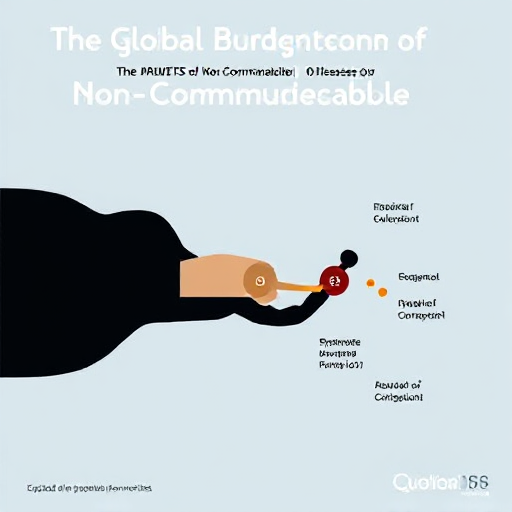Non-communicable diseases (NCDs) such as cardiovascular diseases, diabetes, chronic respiratory diseases, and cancers are Non-Communicable Diseases responsible for a staggering 75% of global deaths, according to the World Health Organization (WHO). As the burden of these diseases continues to rise, the need for innovative public health strategies to prevent and manage NCDs has never been more urgent. This article explores the future of public health, focusing on groundbreaking innovations that hold the potential to transform the landscape of NCD prevention.
Understanding Non-Communicable Diseases
Before delving into innovations, it’s essential to understand the factors contributing to the rise of NCDs. Lifestyle choices, such as poor diet, physical inactivity, tobacco use, and excessive alcohol consumption, are significant risk factors. Additionally, socio-economic Non-Communicable Diseases determinants, environmental influences, and genetic predispositions play crucial roles in the development of these diseases.
Given the complexity of NCDs, a multifaceted approach is necessary to address their prevention effectively. Here are some innovative strategies that are shaping the future of public health in combating NCDs.
1. Digital Health Technologies
The advent of digital health technologies is revolutionizing the way we approach public health. Mobile health (mHealth) applications, wearable devices, and telemedicine platforms are empowering individuals to take charge of their health.
Mobile Health Applications Non-Communicable Diseases
mHealth apps can track physical activity, monitor dietary habits, and provide personalized health recommendations. For instance, apps like MyFitnessPal and Lose It! help users log their food intake and exercise, making it easier to maintain a healthy lifestyle.
Wearable Devices Non-Communicable Diseases
Wearable technology, such as fitness trackers and smartwatches, can monitor vital signs, physical activity levels, and sleep patterns. These devices provide real-time feedback, encouraging users to make healthier choices. For example, Fitbit and Apple Watch have features that remind users to stand, move, or breathe, promoting physical activity and mindfulness.
Telemedicine
Telemedicine has gained significant traction, especially during the COVID-19 pandemic. It allows healthcare providers to reach patients remotely, making healthcare more accessible. This is particularly beneficial for individuals in rural or underserved areas, where access to healthcare services may be limited.
2. Artificial Intelligence and Big Data
Artificial intelligence (AI) and big data analytics are transforming public health by enabling more precise and effective interventions.
Predictive Analytics
AI algorithms can analyze vast amounts of health data to identify trends and predict the likelihood of NCDs in specific populations. For instance, predictive analytics can help identify individuals at high risk for diabetes based on their lifestyle choices and genetic factors, allowing for early intervention.
Personalized Medicine
Big data can facilitate personalized medicine, tailoring prevention and treatment strategies to individual patients. By analyzing genetic, environmental, and lifestyle data, healthcare providers can develop customized plans that address the unique needs of each patient, improving outcomes and reducing healthcare costs.
3. Community-Based Interventions
Innovative public health strategies increasingly focus on community engagement and empowerment. Community-based interventions leverage local resources and knowledge to promote healthier lifestyles.
Health Promotion Programs
Programs that encourage physical activity, healthy eating, and smoking cessation can be tailored to meet the specific needs of communities. For example, local governments can implement initiatives that create safe spaces for exercise, such as parks and walking trails, or provide access to fresh produce through community gardens and farmers’ markets.
Peer Support Networks Non-Communicable Diseases
Peer support networks can play a vital role in promoting healthy behaviors. These networks connect individuals with similar health goals, providing motivation and accountability. For instance, weight loss support groups or smoking cessation programs can foster a sense of community and shared purpose, making it easier for individuals to achieve their health goals.
4. Policy Innovations
Public health policies are crucial in shaping the environment in which individuals make health-related choices. Innovative policy approaches can create healthier communities and reduce the burden of NCDs.
Sugar and Tobacco Taxes
Implementing taxes on sugary beverages and tobacco products has proven effective in reducing consumption. Countries like Mexico and the UK have seen a decline in sugary drink sales following the introduction of sugar taxes. Similarly, higher tobacco taxes have been linked to reduced smoking rates, particularly among young people.
Urban Planning Non-Communicable Diseases
Urban planning that prioritizes health can significantly impact NCD prevention. Designing cities with walkable neighborhoods, accessible public transportation, and green spaces encourages physical activity and promotes mental well-being.
5. Education and Awareness Campaigns
Education is a powerful tool in preventing NCDs. Innovative awareness campaigns can inform individuals about the risks associated with unhealthy behaviors and promote healthier choices.
ALSO READ: Non-Communicable Diseases
Social Media Campaigns
Social media platforms can be leveraged to reach a broader audience with health messages. Campaigns that utilize engaging content, such as videos, infographics, and challenges, can effectively raise awareness about NCD prevention. For example, the #MoveMore campaign encourages individuals to share their physical activity experiences, fostering a sense of community and motivation.
